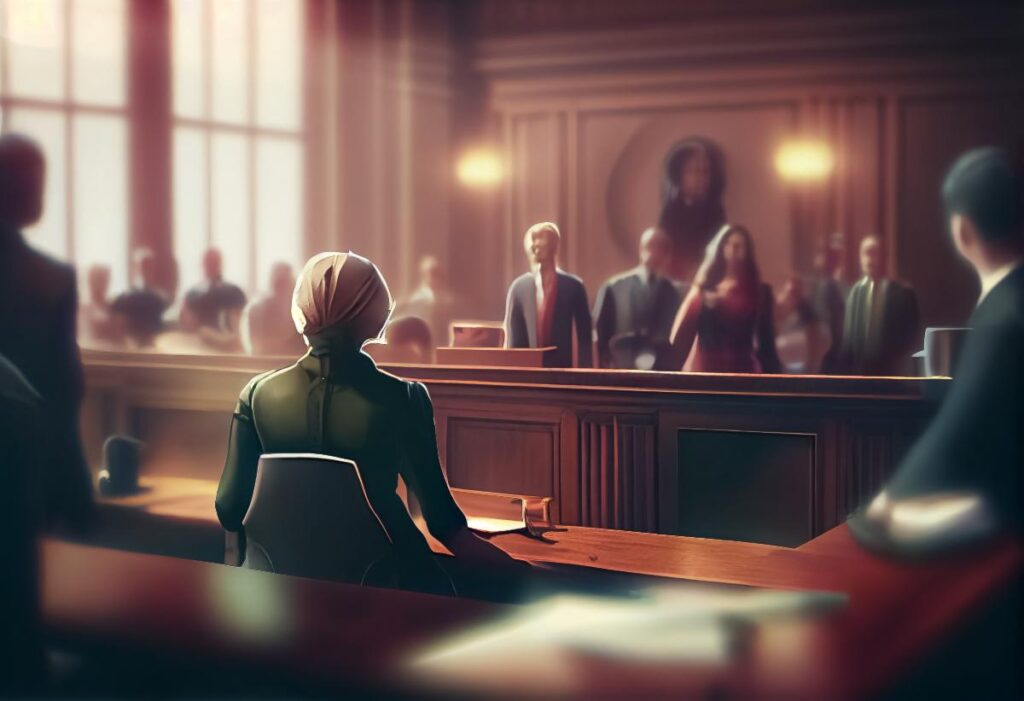
| a series by Dick Fichter, Parishioner with support from Rev. Dina, Rector Febraury 28, 2024 |



| The following contains substantial portions from an article by Professor Doug Linder on the Famous Trials Website, The Trial of Jesus: An Account (2002) and also from the Living in Christ series, The Political and Religious Structure in Jesus’ Time, Saint Mary’s Press. Background on the Peers at the Trial of Jesus and their Relationships The relationship of sects within the Jewish State is represented in the New Testament (NT) as predominately between Sadducees and Pharisees. These sects were believed to represent less than ten percent of the Jewish population and the rest of the Jewish population was just trying to get along under Roman rule. There were additional sects such as the Essenes and Zealots, but we are interested in those described in the NT for the trial. In 63 B.C.E. the Roman general Pompey captured Jerusalem, and in so doing put an end both to the independent Jewish state of Palestine and eight decades of rule by the Hasmonean dynasty of high priest. That is, at this time, Jerusalem became subservient to a foreign power and its appointed officials. Prior to this, the area was under Greek influence stemming from the conquests of Alexander the Great. This influence was pervasive enough so that the original scriptures were almost entirely written in Greek. There were enormous differences in Jewish society at this time between the more conservative and religious group, led by the Pharisees and the Hellenized (Greek), and the more aristocratic group led by the Sadducees. [A two-party system, I guess.] Who Were the Sadducees? The Sadducees were apparently of the elite, wealthy class, and were closely allied with the high priestly families. Josephus [a Jewish historian] says the Sadducees had a following among the rich only, while the Pharisees had a greater following among the common people. In the Acts of the Apostles, the Sadducees are associated with the high priest and the Jerusalem Temple (see 4:1–2, 5:17) and benefitted from this association as well as their association with the Romans. In New Testament times, the high priest was appointed by King Herod, the client king of the Romans, then by Herod’s son Archelaeus, and later directly by Roman rulers of Judea. According to Josephus, the Pharisees and Sadducees were often in conflict. The Pharisees taught many religious rules that were not directly in the Torah; the Sadducees rejected all laws that were not explicitly written in the Torah. Josephus also reports that the Sadducees were harsher in their legal judgments and punishments than were the Pharisees. The rabbinic literature often portrays the Pharisees and Sadducees disagreeing about matters of purity. Who were the Pharisees? It appears that most members of the Pharisees were not priests. They had considerable influence in Israelite society—Josephus reports that at the beginning of the revolt against Rome in AD 66, the leading Pharisees met with the high priests and “men of power” in an attempt to resolve the crisis. This political influence, however, was indirect. The Pharisees did not hold political offices but rather influenced such leaders as the Hasmonean Queen Salome Alexandra and later Herod the Great. Mark portrays the Pharisees as plotting with the “Herodians” to destroy Jesus (see Mark 3:6, 12:13). They did, however, serve on the council (“Sanhedrin”) that advised the high priest (see Acts of the Apostles 5:34,23:6–9). The Pharisees are often portrayed in the Gospels as hypocritical, concerned more with outward show than with sincere faith, “for they preach but they do not practice” (Matthew 23:3; see also 23:4–5,25–28). Jesus contrasts the prayers of a self-righteous Pharisee with a humble tax collector; it is the tax collector who goes away justified by God (see Luke 18:9–14). It is not surprising that the Gospel writers tended to focus on negative aspects of the Pharisaic movement, as early Christians and Pharisees were in serious conflict over basic issues, such as the observance of Torah. Josephus’s portrait is much more positive. He reports that the Pharisees avoided luxury and lived a simple lifestyle. In contrast to the Sadducees, they enjoyed support among the common people. And were ultimately more open and accepting of the good news. The Apostle Paul was a Pharisee (see Philippians 3:5, Acts of the Apostles 23:6). Pharisees were also part of the first church community at Jerusalem (see Acts of the Apostles 15:5). Pharisees and the Torah The primary aim of the Pharisees was to apply the details of the Torah to everyday life. Many of the commandments of Torah are vague, and at times they are inconsistent or even contradictory. The Pharisees worked out practical methods to overcome these challenges. They were well known for “traditions” that they taught as a supplement to, or as an interpretation of the commandments of the Torah. These extra-Biblical and man-created oral laws were called “the tradition of the elders.” (Mark 7:3-5) Over the centuries the rabbis counted 613 individual laws in the Pentateuch. By the time of Jesus, these rabbinic extrapolations, called Halakhah meaning “walk/behavior,” had become a prison for the Jews. The non-Biblical rules from the Halakhah governed the daily lives and religious practices of the Jews. Every aspect of Jewish life was hemmed in by a tangled web of prohibitions. These man-made laws had more power over the everyday life of the people than Biblical laws did. (From Early Church History) [Consider dealing with 613 as compared to only ten.] There is a painting for each of these laws which were on display at James Madison University. JMU with a list of the 613 laws and the portion of the Old Testament supporting the rule/law. Here are examples of a few with legal implications and procedures for a trial: 541. Not to appoint judges who are not familiar with judicial procedure. (Deuteronomy 1:17) 543. The court must not execute through a majority of one, but at least a majority of two is required. (Exodus 23:2) 544. A judge who presents a case for acquittal must not present an argument for conviction in capital cases. (Exodus 23:2) 545. The court must carry out the death penalty of stoning. (Deuteronomy 22:24) 549. The court must hang those stoned for blasphemy or idolatry. (Deuteronomy 21:22) Next week: The Prevailing Attitudes and Concerns of the People at the time of Jesus’ trial. |

Do you have any questions for the Camel? Questions about God, or Jesus, or the Church? About how to be Christian? Submit them via email to clergy@epiphanyec.org. Your name will be kept anonymous.
And a response will show up in a future Hump Day Message!

| God Loves You. No Exceptions. Wednesday Night Lentent Compline Begins TONIGHT! Over Zoom Join at 7pm using Link: https://us02web.zoom.us/j/87879091376?pwd=LytDUmx2d2t4azA3TXRYL3lFeGs5dz09 Wednesday, 2/28 Wednesday, 3/6 Wednesday: 3/13 Wednesday: 3/20 |
| Holy Week Schedule 3/24 – 3/30 3/24 – Palm Sunday 3/28- Maundy Thursday – Holy Eucharist and Foot Washing in Nave & Stripping of the Altar: 7 p.m. 3/29 – Good Friday – Service in Chapel: 12 p.m.; Service in Nave: 7 p.m. 3/30 – Holy Saturday – Short said service in Nave: 10 a.m. Decoration of church for Easter Sunday 10:15 a.m. Easter Sunday! 3/31 Worship at 10am, Flowering the Cross before and Egg Hunt follows. |


